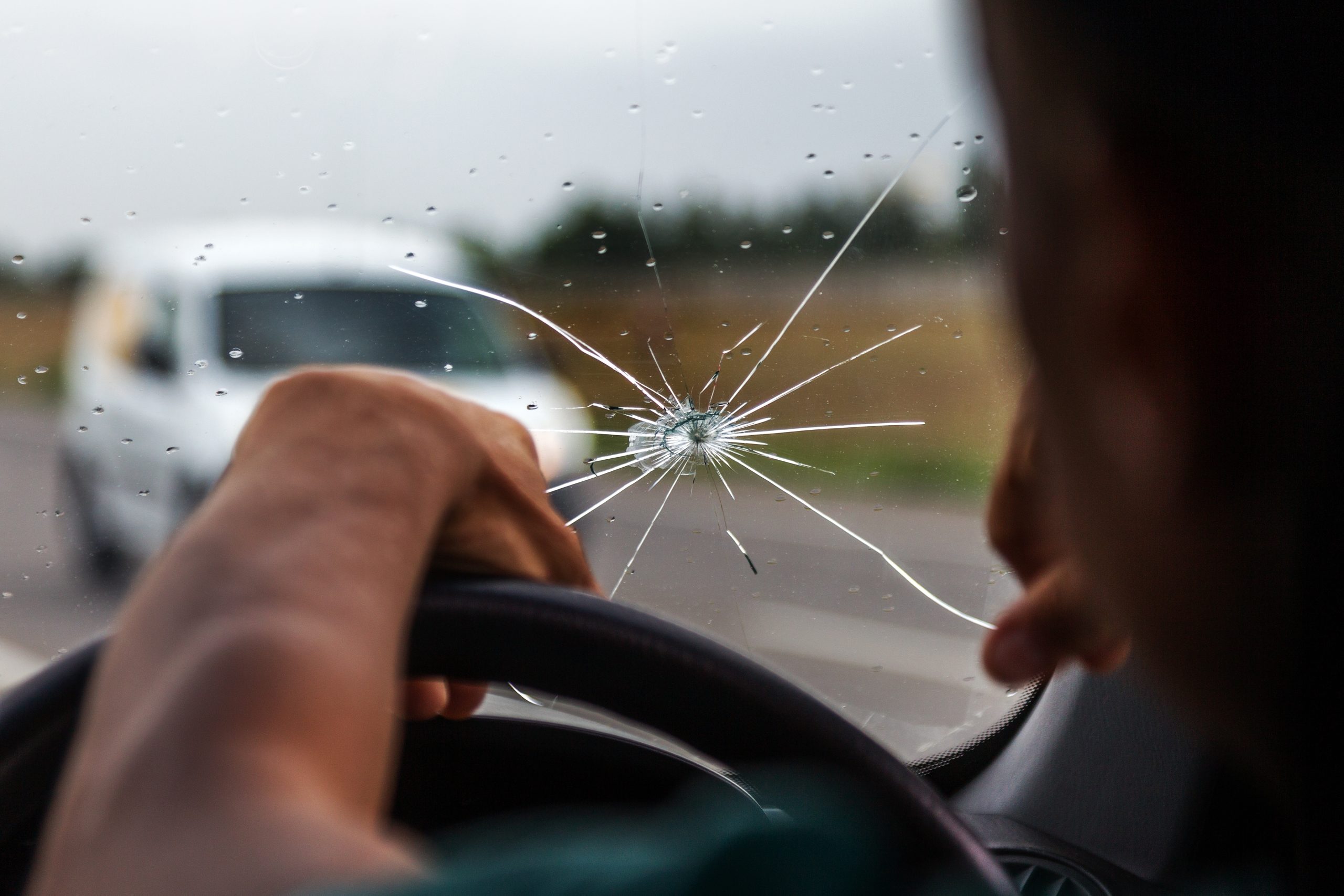Driving with a cracked windshield isn’t just a minor inconvenience—it’s a significant safety and legal concern. A damaged windshield can obstruct your view, weaken your vehicle’s structure, and even result in fines or failed inspections.
Of course, some cracks are so minor drivers may wait to have them repaired or replaced, begging the question…is a cracked windshield a traffic violation?
Here’s what you need to know about the risks, regulations, repair options, and insurance considerations when dealing with a cracked windshield.
Federal Broken Windshield Laws
In the U.S., both federal and state laws regulate windshield safety. So, to answer the question, “is a cracked windshield a traffic violation?” the simple answer is yes. The Department of Transportation (DOT) mandates that all vehicles must have a windshield that meets these criteria:
- The area directly in front of the driver must be free from discoloration or major damage, except for a narrow border: 2 inches from the top and 1 inch on each side.
- Cracks smaller than ¾ inch in diameter are acceptable only if they aren’t intersecting or within 3 inches of another crack.
- Windshield tinting is allowed if it transmits at least 70% of light.
- Objects, decals, or stickers cannot obstruct the driver’s view.
State-Specific Laws
While these federal standards apply across the U.S., individual states often add their own rules. These laws are enforceable regardless of where your car is registered, so if you’re traveling across state lines, it’s wise to research local requirements—or, better yet, fix the damage before hitting the road.
Why Cracked Windshields Are Dangerous
Windshield laws aren’t just bureaucratic red tape—they exist to protect you. Here’s why:
- Impaired Visibility: Cracks or chips can distort your view, making it harder to spot hazards or react quickly.
- Reduced Structural Integrity: Your windshield contributes to your vehicle’s overall strength. It may fail during a collision or rollover if compromised, increasing the risk of serious injury.
- Potential for Escalation: Small chips can spread quickly due to temperature changes, moisture, or road vibrations, turning a minor issue into a costly repair.
How to Fix a Cracked Windshield
Getting your windshield fixed in a timely manner is the best way to avoid a ticket for cracked windshields.
Repairing Small Chips and Cracks
Minor damage can often be repaired using a special resin that restores the windshield’s strength and clarity. If addressed promptly, this quick and cost-effective fix can prevent further damage.
When Replacement Is Necessary
If the crack is large or in the driver’s line of sight, replacement is typically the safer option. Modern adhesives allow the process to be completed within hours, with the vehicle ready to drive shortly afterward.
Does Insurance Cover Windshield Repairs?
Many auto insurance policies include windshield repair and replacement under comprehensive coverage. Some states, such as Florida, Kentucky, and South Carolina, even offer zero-deductible windshield replacements, meaning you may not have any out-of-pocket costs.
Insurers often prefer repairs over replacements due to the lower cost, but extensive damage usually necessitates a full replacement. Always confirm that the service provider is approved by your insurer to ensure compliance with your policy.
Final Thoughts
Driving with a cracked windshield compromises safety, violates legal requirements in many areas, and can lead to costly consequences if ignored. To avoid unnecessary risks, regularly inspect your windshield, address damage promptly, and understand your insurance coverage.
Maintaining a clear, intact windshield is essential for safe driving and protecting everyone in your vehicle. Another way to protect your vehicle and your trip is to get the best-suited insurance policy for your lifestyle.
Use Happy Camper Insurance to explore plans for your RVs, boats, or power sports vehicles today.


